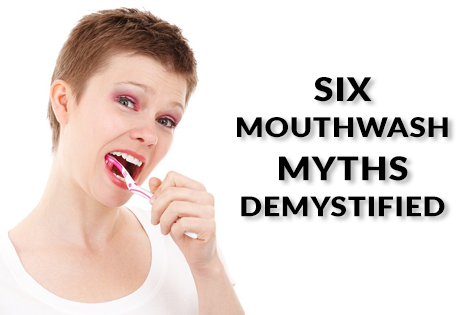Brush and floss twice daily - everyone knows how important it is to keep little teeth and gums healthy. But what about mouthwashes? Do they really work? What are the different kinds out there? And which is the best one for your children? rt healthy teeth dentist, Dr Lincoln Law, discusses the pros and cons of the myriad of mouthwashes out there and how using it in the right way can boost effectiveness.
1. Why use a mouthwash at all?
The main reason is to reduce plaque and gingivitis (inflammation of the gums). Use your mouthwash in combination with brushing and flossing as part of a twice-a- day routine.
2. Can mouthwashes be used whatever your age?
Mouthwashes may sound like something that’s only suitable for adults, but the Australian Dental Association (ADA) says that mouthwashes can be used for children from the age of six. Some are developed especially for children and can be found in supermarkets and pharmacies.
3. Is alcohol in mouthwash harmful?
The alcohol in mouthwashes is a pharmaceutical grade pure ethanol, without the risks of ‘impure’ alcohol in other sources, so the risk should be less. Plus, there is no evidence that alcohol-based mouthwashes raise the risk of oral and pharyngeal cancer. However, if you are wary of the alcohol for you or your child, then there are plenty of alcohol-free mouthwashes to choose from.
4. What about fluoride?
Fluoride hardens the enamel to help fight tooth decay and this is especially important for children’s milk teeth. When a child has healthy baby teeth, this allows their adult teeth to grow and develop in the right place, potentially avoiding any orthodontic treatment in the future. The most effective use of fluoride is by applying it directly to tooth surfaces via toothpastes, rinses, concentrated creams and gels.
5. Can mouthwash replace flossing?
Mouthwashes are a great addition to everyday oral health care, but they can’t replace dental floss. Floss helps to physically break down and remove the sticky biofilm (plaque and bacteria that build up on teeth and gums), particularly between teeth. This physical removal action is important, so as soon as your child’s teeth start to fit closer together, flossing should become part of their dental routine.
6. Rinse before or after brushing?
Because a mouthwash can’t break down or destroy bacterial biofilm and remove plaque, they should be used after brushing and flossing. The ADA advocates a three-step oral hygiene regime of brush-floss- rinse. After a layer of plaque has been broken down with brushing and flossing, the mouthwash can then get into the smaller and shallower layers of the plaque and carry out its antimicrobial action. The ingredients in a mouthwash may also act as a barrier to help reduce the opportunity for plaque to stick to the teeth again.
The recommended rinsing time for most popular mouthwashes is 30 seconds, twice a day. But remember, if you are unsure about what sort of mouthwash to use for either you or your child, consult your dentist or doctor for more information says Dr Lincoln Law.
ABOUT THE EXPERT
Dr Lincoln Law has gained over 12 years’ experience working at a variety of dental practices in Australia from rural areas to capital cities. Lincoln has a keen interest in orthodontics and periodontics. He enjoys working with his patients to educate and encourage them to build confidence and understanding in order to maintain the best oral health possible.








 Agree (1)
Agree (1) Disagree (
Disagree (










__small.png)










